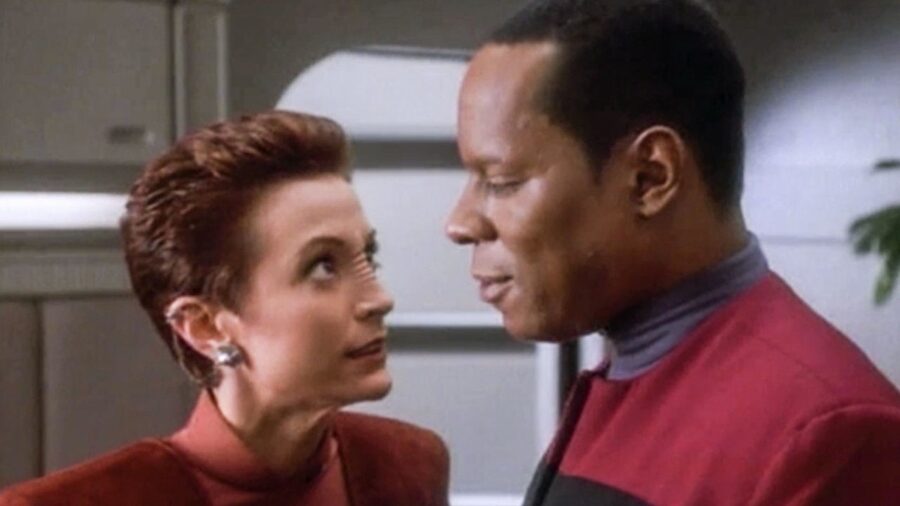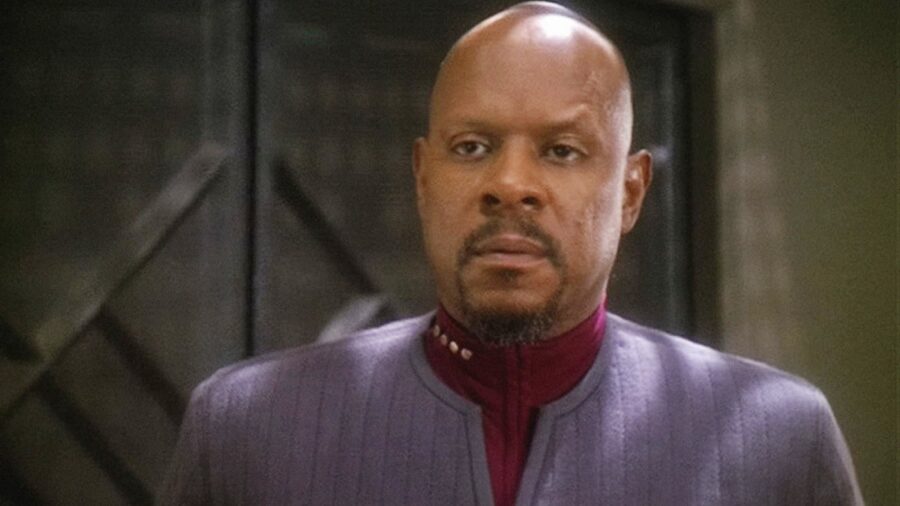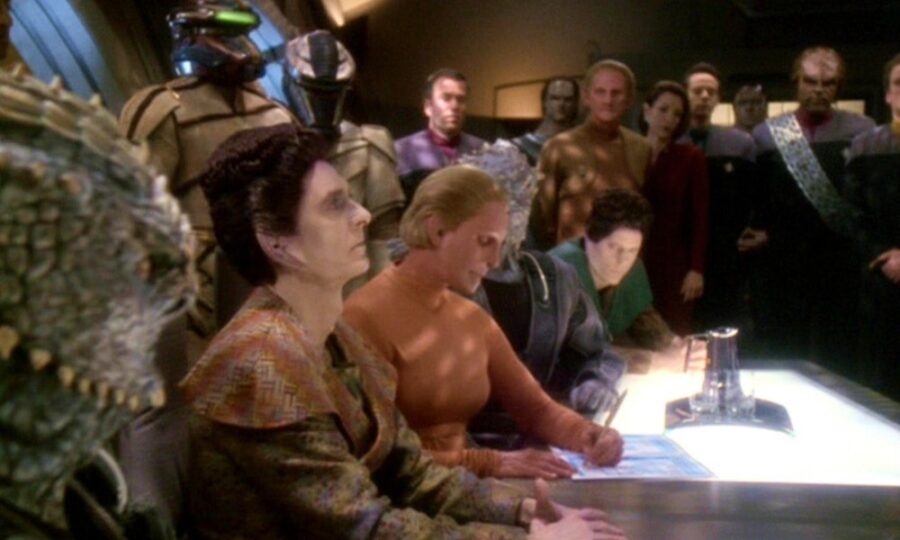How Star Trek Fans Changed Deep Space Nine For The Better

From the very beginning, Star Trek has been a show that fans have had a major hand in shaping. For example, The Original Series wouldn’t have had more than one season if not for passionate fan efforts to keep the adventures of the Starship Enterprise on the air. Decades later, that tradition was still alive, as the former Deep Space Nine showrunner Michael Piller admitted that the show began exploring its mystical side after a very positive fan response.
Battle Lines Brought Out The Mystical Side

The Star Trek episode that prompted Piller to call out the fans was “Battle Lines,” a Deep Space Nine story featuring aliens endlessly fighting on a planet where nobody can die. Looking back on the episode, the showrunner described how “It’s about rebirth and resurrection and spiritual mystical things,” something he knew the audience would enjoy based on reactions to the very first episode.
That was where he saw “people react very positively to the mystical component of the pilot.” He admitted that he and the producers didn’t do many mystical episodes in season 1 but that “Battle Lines” changed his mind. “My feeling is we should be finding more of those kinds of things. I think they’re more interesting than ships breaking down.”
Keeping Things Similar But Fresh

In this way, it’s fair to say that Star Trek fans helped transform Deep Space Nine for the better. Piller’s instincts were quite right…as the second live-action spinoff of The Original Series, DS9 had to attract new audiences while still pleasing longtime fans of the franchise. And because those fans had watched very similar stories in the era of both Kirk and Picard, it was that much more important for this new spinoff to differentiate itself from what came before.
Bringing In Religion

To do this, this Star Trek spinoff went where neither its stars or its fans expected it to go: into religion. In the pilot episode of the show, Deep Space Nine is a relatively unimportant space station, but all of that changes when Starfleet discovers that Bajor suddenly has a stable wormhole to the Gamma Quadrant. Intelligent beings who live outside of linear time live inside that wormhole, and they choose to make station commander Benjamin Sisko their emissary.
Dives Deep In Later Season

As a result, this Star Trek show gave fans a better look at Sisko, a character who already had his own baggage (his wife was killed during a Borg attack) and now had to balance life as both a Starfleet officer and space Jesus.
Piller was true to his word, and later seasons of Deep Space Nine focused very extensively on mysticism as well as the uncomfortable intersection between religion and science (like whether these beings are Prophets or just wormhole aliens). Thanks to Gene Roddenberry, the franchise had previously shied away from religion as a main focus, making this new show feel very unique.
The Best Finale In Star Trek History

This Star Trek spinoff focused on mysticism right through the series finale, hailed by fans as one of the most ambitious endings in franchise history. Sisko tries to sacrifice his life to stop Gul Dukat, someone who sought to destroy the prophets and usher in an age of darkness. However, Sisko was saved from death by the timeless Prophets, giving Deep Space Nine an unforgettable ending that would have been impossible without fans so loudly embracing their own inner mysticism.













Login with Google